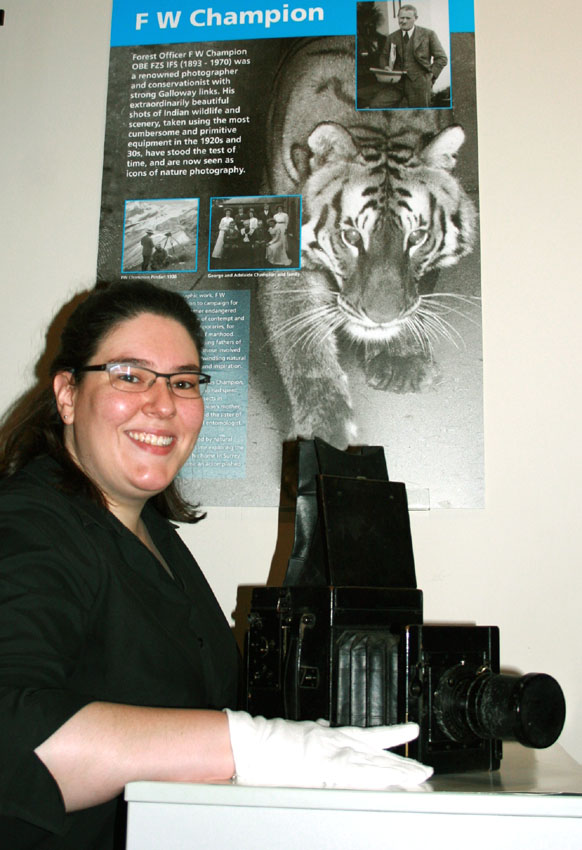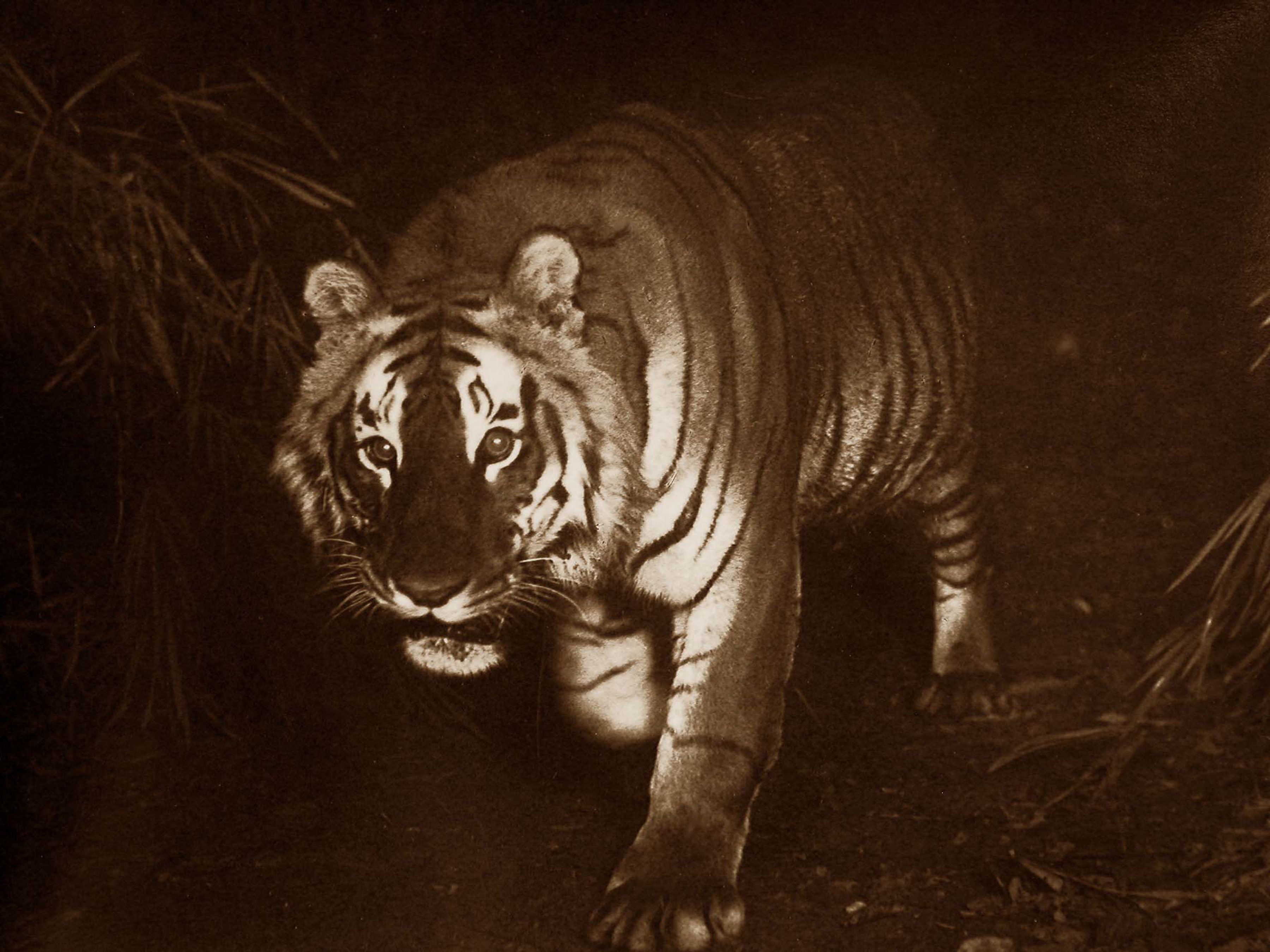RSS Press releases
We publish all of our recent press releases online so you can keep up to date.
You can use special RSS software (or newer web browsers) to subscribe to an RSS feed of our recent press releases . Email pressenquiry@dumgal.gov.uk if you'd like further details on any of our press releases.
If you want to speak to a communications officer, you can find their working-hours telephone numbers and what areas of the council they cover at www.dumgal.gov.uk/pressenquiry.
Read our press releases as HTML >>
Recent releases
Last Updated: 22/11/2024 10:34:41
FW Champion OBE IFS, Galloway’s Tigerman
Tuesday, 08 October 2013 10:16
Pioneering the use of tripwires and camera traps, Frederick Walter Champion produced some amazing photographs of Indian wildlife in the 1920s and 30s and these are the centre piece of an exhibition called “Tiger, Tiger” currently at Dumfries Museum. On Thursday 17 October at 7pm FW Champion’s grandson James Champion will give a talk entitled “Tripwire for a Tiger: In The Pugmarks of Galloway’s Tigerman”, a touching biographical background and that retrace his grandfather's footsteps through the Indian jungles.
Museum Officer Fiona Wilson says: “The images of Indian tigers and other wildlife are all the more amazing considering the difficulties Champion overcame using early glass plate cameras and mercury flashes whilst sitting in trees in mosquito infested locations. After suffering several bouts of malaria he went on to develop a tripwire system to trigger the camera and flash when it was activated by an animal. This set up could only be used in dry conditions and the success rate was low. The tripwire was often activated by animals other than those that Champion wished to photograph or even by falling twigs. The best results, however, have stood the test of time.”
Born in Surrey in 1893, Champion married Julia Stewart from Carruchan, Dumfries in 1923 and she accompanied him whilst he worked overseas. In his role with the Imperial Forestry Service in India, Champion came in close contact with tourist hunters when he was obliged to hand out hunting permits. It is said that he occasionally indulged his burgeoning preservationist tendencies by handing out permits to areas known to be tiger free. As soon as he was able, Champion went against the fashion for shooting with rifles and took up the camera. The resulting work is stunning and evocative. For the first time viewers were truly able to witness animals in their natural state. The night shots triggered by trip wires were, at the time, unique and his work has had a profound effect on many wildlife photographers and conservation supporters since.
In 1955 the Champions settled at Julia’s family home, Cairnsmore, near Newton Stewart. After his death in 1970 Champion’s photographs were donated by his family to the Natural History Museum in London. This exhibition celebrates his life’s work with a selection of 50 of his images and also features the original camera equipment Champion used in the field as well as a slide show about contemporary wildlife photography and film making by well known local photographer Keith Kirk.
There is no charge for James Champion’s talk, but numbers are limited so please telephone Dumfries Museum on 01387 253374 to reserve a place.
Throughout the exhibition and October holidays there is a range of free drop in gallery activities for children including a track the tiger trail, tiger mask making and creating a safari scene. The exhibition runs until Saturday 9 November. The museum is open Tuesday to Saturday 10am to1pm and 2 to 5pm
ENDS


Museum Officer Fiona Wilson says: “The images of Indian tigers and other wildlife are all the more amazing considering the difficulties Champion overcame using early glass plate cameras and mercury flashes whilst sitting in trees in mosquito infested locations. After suffering several bouts of malaria he went on to develop a tripwire system to trigger the camera and flash when it was activated by an animal. This set up could only be used in dry conditions and the success rate was low. The tripwire was often activated by animals other than those that Champion wished to photograph or even by falling twigs. The best results, however, have stood the test of time.”
Born in Surrey in 1893, Champion married Julia Stewart from Carruchan, Dumfries in 1923 and she accompanied him whilst he worked overseas. In his role with the Imperial Forestry Service in India, Champion came in close contact with tourist hunters when he was obliged to hand out hunting permits. It is said that he occasionally indulged his burgeoning preservationist tendencies by handing out permits to areas known to be tiger free. As soon as he was able, Champion went against the fashion for shooting with rifles and took up the camera. The resulting work is stunning and evocative. For the first time viewers were truly able to witness animals in their natural state. The night shots triggered by trip wires were, at the time, unique and his work has had a profound effect on many wildlife photographers and conservation supporters since.
In 1955 the Champions settled at Julia’s family home, Cairnsmore, near Newton Stewart. After his death in 1970 Champion’s photographs were donated by his family to the Natural History Museum in London. This exhibition celebrates his life’s work with a selection of 50 of his images and also features the original camera equipment Champion used in the field as well as a slide show about contemporary wildlife photography and film making by well known local photographer Keith Kirk.
There is no charge for James Champion’s talk, but numbers are limited so please telephone Dumfries Museum on 01387 253374 to reserve a place.
Throughout the exhibition and October holidays there is a range of free drop in gallery activities for children including a track the tiger trail, tiger mask making and creating a safari scene. The exhibition runs until Saturday 9 November. The museum is open Tuesday to Saturday 10am to1pm and 2 to 5pm
ENDS


Page last updated: 20/05/2022



